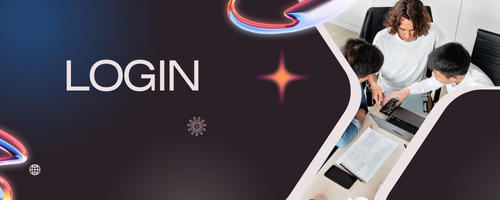The digital landscape is constantly evolving, and website design trends are no exception. Staying updated with the latest web design trends not only helps your website look modern and professional but also improves user experience, engagement, and conversions. As we move through 2025, several trends are shaping the way websites are designed and experienced. Here’s a detailed look at the top 10 web design trends in 2025.
1. Dark Mode Design
Dark mode has become increasingly popular for its sleek, modern appearance and user-friendly experience. It reduces eye strain, especially in low-light environments, and gives websites a premium, futuristic feel. Many platforms and applications are adopting dark mode options, and websites that offer a toggle between light and dark modes are likely to enhance user engagement.
2. 3D Elements and Immersive Visuals
Websites are moving beyond flat design toward immersive 3D visuals and interactive graphics. Using 3D elements can make your website stand out, increase user engagement, and provide an interactive experience. These elements are increasingly optimized for performance, ensuring websites remain fast even with rich visuals.
3. Micro-Interactions
Micro-interactions are subtle animations or design elements that respond to user actions, such as hover effects, button animations, or scroll-triggered movements. These small touches enhance user experience by providing feedback, guiding navigation, and making the website feel more dynamic and interactive.
4. Minimalist and Clean Design
Less is still more in 2025. Minimalist designs focus on clean layouts, ample white space, and simplified navigation. This trend prioritizes user experience, helping visitors focus on important content without distractions. Minimalism also improves website loading speed and adapts well to mobile devices.
5. AI-Powered Personalization
Artificial intelligence (AI) is changing the way websites interact with users. AI-powered personalization allows websites to show customized content, product recommendations, and dynamic user experiences based on visitor behavior and preferences. Personalized experiences increase engagement, conversion rates, and customer satisfaction.
6. Voice User Interface (VUI) Integration
With the rise of voice assistants like Alexa and Google Assistant, integrating voice search and voice commands into websites is becoming more important. Voice user interfaces provide a convenient way for users to navigate and interact with websites, especially on mobile devices. Websites optimized for voice search also gain an SEO advantage.
7. Advanced Typography and Variable Fonts
Typography has become a key element in creating visually appealing and brand-focused websites. Designers are experimenting with bold, unique fonts and variable fonts that adjust to different screen sizes. Using creative typography can make your website more memorable, guide user attention, and convey brand personality.
8. Sustainable and Eco-Friendly Design
Sustainable web design focuses on creating websites that use minimal resources and energy. Fast-loading websites, optimized images, and simplified code contribute to lower energy consumption. As users become more eco-conscious, having a sustainable website demonstrates social responsibility and appeals to environmentally aware audiences.
9. Neumorphism and Soft UI
Neumorphism combines skeuomorphism and flat design, creating soft, realistic, and tactile user interfaces. This trend focuses on subtle shadows, light effects, and depth to make elements feel interactive and tangible. Neumorphism adds a modern and elegant touch to website design while maintaining simplicity.
10. Scroll-Triggered Animations and Storytelling
Interactive storytelling through scroll-triggered animations allows users to engage with content as they navigate the website. This trend combines visuals, text, and animation to create immersive narratives that guide users through products, services, or brand stories. Storytelling keeps visitors engaged longer and increases the likelihood of conversions.
Conclusion
The web design trends of 2025 emphasize user experience, interactivity, personalization, and visual innovation. Dark mode, 3D elements, micro-interactions, minimalist layouts, AI-driven personalization, voice interfaces, creative typography, sustainable design, neumorphism, and interactive storytelling are shaping the future of web design.
Adopting these trends can help your website stay modern, attract more visitors, and provide an engaging experience that sets your business apart from the competition. However, it’s important to balance trend adoption with usability and performance—overloading your site with features can slow it down or distract users.
By incorporating these top web design trends thoughtfully, businesses can ensure their websites remain visually appealing, functional, and future-proof in 2025 and beyond.





